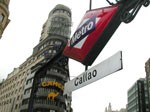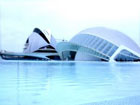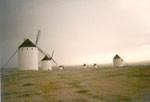Living in Spain
Si quieres más información sobre la vida en España, contacta con nosotros



RECOMENDATIONS
Spanish is one of the most important languages for global communication. Close to four hundred million people around the world speak Spanish, and it is the official language in twenty-one countries. Spanish is also one of the most used tongues at major international organizations; its political and diplomatic influence continues to grow. In terms of trade, Spanish provides access to an increasingly expanding market, as well as to some of the most promising emerging economies.
Additionally, Spanish is the gateway to a great culture. It is rich and diverse, universal in all its expressions. Spain, currently a member of the European Union, was the cradle of the Spanish language. It is a merging place of great civilizations—Greek, Roman, Arab, etc—, whose contributions have shaped our language before spreading to the rest of the world and thus becoming international. Today, Spanish is our most valuable asset, as thousands of people and companies offer services and products based on it.
CLIMATE
Spain is very famous for how many sunny days it has throughout the year. Its climatological year is divided into four well-differentiated seasons; although, depending on the region, seasonal changes may be abrupt or virtually unnoticeable.
Summer. Sun and heat are present all over Spain. For the most part, the light clothing is the most usual: T-shirts, thin dresses, skirts, and so on. However, at night in mountain or coastal regions it is advisable to have a thicker garment at hand. Temperatures range between 25 and 35º C (77 and 95º F).
Autumn. The weather is more irregular in the fall. Yet, we may encounter cooler, cloudy days. Generally, during this season people wear jackets, raincoats on wet days, and sometimes sweaters, though it is also a good idea to have a T-shirt for warmer sunny days. Temperatures range between 15 and 19º C (59 and 66º F). Climatic extremes are more noticeable in the mountains and hinterland, while the seaside tends to be more stable.
Winter. This is when the cold weather sets in. Although Spain is far away from extremely cold regions, its winters are cold and it even snows in some parts of the country: the mountains—a delightful destination for winter sports lovers. Thick warm sweaters and coats are required. Temperatures range between 2 y 15º C (35 y 59º F).
Spring. This is the season with the most changeable weather. It sometimes rains and it may be cold when it is overcast. Yet, when the sun shines temperatures are quite pleasant. You will need both winter and summer clothes. Temperatures range between 10 y 21º C (50 and 70º F).
CURRENSY AND EXCHANGE RATE
Spain is part of the Euro Zone. This union is now made up of the following nations: Spain, France, Germany, Portugal, Italy, Greece, Belgium, Luxemburg, the Netherlands, Austria, and Finland. All members share the same currency, which makes movement among member states easier. Traveler’s checks can generally be cashed at any bank, though one might have to go to aspecific office or branch. A credit card is much more convenient as a means of payment.
Most businesses accept credit cards such as Visa, American Express, Mastercard and Diners Club. Major cities have private cash exchange facilities, some of which also take traveler’s checks. These establishments usually have a service charge. For current Euro exchange rates go to www.oanda.com/convert/classic . As an example, coffee at a café costs between 1.00 and 1.20 euros. A Big Mac menu is 6 euros, a fixed menu (2 courses + dessert + drinks) between 7 and 10 euros.
HOURS
By and large, business hours for most shops in the country start at 10:00 am and last till 2:00 pm, Monday thru Saturday.
Later day hours usually go from 5:00 pm to 8:00 pm. Department stores have continuous hours and boutiques and department store establishments usually are open for business on the first Sunday of the month. Restaurants are open from 1:00 pm to 4:00 pm for lunch and from 8:00 pm to 11:00 pm for dinner. One may find that some small eateries, bars, and cafés serve certain dishes at any time of the day.
Bank offices are open from 8:30 am to 2:30 pm, Monday thru Friday. And from October to April, they are also open Saturdays from 9:00 am to 1:00 pm.
Most public services such as city councils and health centers are open from 9:00 am to 2:00 pm, Monday thru Friday.
EVERYDAY LIFE IN SPAIN
Breakfast . Typically, breakfast is made up of a glass of café au lait ( café con leche ) or cocoa, apastry or toasts with butter and jam or olive oil. Many people have a quick coffee at home and then have something else at a bar or café. Freshly squeezed orange juice is common for breakfast. Most Spaniards take a mid-morning break to get some strength back until lunchtime, which is a bit later in Spain than in the rest of Europe. This second break is usually for café au lait and something light to snack. Although it depends on the regions and activity, we can say that breakfast at home is normally between 7:00 and 8:00.
Lunch . This is the main meal of the day. Lunch is usually between 1:30 pm and 4:00 pm. During these hours, all restaurants, bars and cafés offer food. The most common meal is a “day’s menu” ( menú del día ), which includes several possibilities for a first and second course choice plus dessert. Bread and drinks are usually included for a fixed price.
Depending on the season and the region one happens to be in, dishes may be heavier or lighter; whatever the case, meals are usually have enough nutrition to go on with work. Contrary to what most people around the world think, Spaniards do not take a nap after lunch.
Dinner . Dinner is not as important in Spain as it is in other countries; it is considered a minor meal. Dinner hours usually range between 9:30 pm to 11:00. In many cases, particularly in the summer or on weekends, dinner is normally eaten at a bar or restaurant. People order tapas or raciones (larger portions) and “peck” from these less abundant but energy-giving dishes—an alternative to the typical dinner.
PUBLIC TRANSPORT
Spain has excellent public trans portation. Depending on the city, urban transit possibilities are as follows:
Bus. All large cities in Spain have a modern urban bus system covering enough routes to connect all the different parts of the city. There are clear signs that enable travelers to find out possible routes. At specific points along the bus network of most big cities, there are free maps available for travelers. Many cities have a night bus service, which though more limited, takes passengers to main transport hubs. The frequency of buses and number of routes in service at night is more limited than during the day. Night buses are known as búhos (owls).
Metro. Some cities in Spain, particularly Madrid, have some of the best and most modern subway lines in Europe. There are free subway network maps available so users can find out the features of each and every line. This means of transport is a wonderful alternative, which may Spaniards use to avoid heavy surface traffic.
Suburban train. It is a high quality service covering routes linking large cities and smaller towns. There are network maps available specifying all the different lines and timetables. Suburban train terminals are usually stations directly connected to subway or bus services.
Taxi. Spanish cities have a modern taxi fleet. All taxis have a defined official fare that passengers may see. Such list of rates also shows the extra charges passengers have to pay for luggage, distance, and so on. Likewise, when asked, taxi drivers must provide a receipts pecifying charges, as well as pick-up point and destination.
Some cities have a monthly public transport pass and/or 10-ride pass for metro, bus and suburban train networks or a combination. These passes usually cheapen travel or commuting costs and they are sold in specific points depending on the city.
GENERAL INFORMATION
Full Country Name: Kingdom of Spain
Surface Area: 504,784 km cuadrados.
Capital: Madrid
Regions: Spain is divided into 17 autonomous communities.
Time zone: GMT/UTC + 1 hour in winter or two in summer (from last Sunday of March to last Saturday of September)
Religion: 90% Catholic
Government: Parliamentary Monarchy
Electricity: 220V, 50 Hz.
Weights and measurements: Metric System.
Telephone dialing: From Spain: 00 + country code + city code + phone number.
 Español
Español 